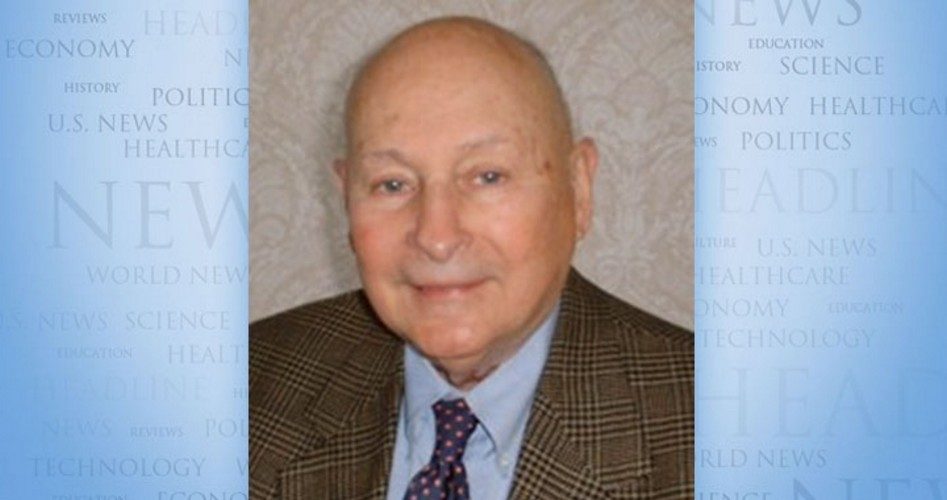
Death educators are quite aware that they are dealing with a highly charged, taboo subject that many children can’t handle. But that hasn’t stopped some teachers from introducing the subject in kindergarten. The January 1989 issue of Young Children carried an article by kindergarten teacher Sue Spayth Riley about her class’s trip to a cemetery.
After a discussion about burials and cremation, one little girl says, “If I die I don’t know whether I want to be put under the ground or not. I want to think about that some more.” A little boy says, “When I die I’m not going to be buried; I’m going to be flamed.”
The cemetery visits deeply impress the children as can be seen by the bizarre games they invent back at school. Ms. Riley writes:
Dramatic play after the trip deepens and extends the experience. On the playground the morning after this year’s pilgrimage, I watched as several children in the sandbox improvised three gravestones by propping plastic frying pans vertically in the sand. The children then lay down in front of their headstones. When another child walked by, one of those in the sandbox called out, “Hey, this is a graveyard, you want to be dead?” Another gravestone was erected, and a child began sprinkling sand on the others. There ensued much arranging and rearranging of children and markers.
Another youngster built a large rectangular block building — a child’s version of a mausoleum — with enough room for a child, hunched up, to get inside. Ms. Riley writes:
This box-like structure was solid on all sides except the front where a baby blanket, supported by a long block on top, served as a door. When a child huddled inside, the blanket was lowered.
When (the boy) called me to the block room to see his creation, Greg explained, “This is a place for dead people.” …
Observing from the sidelines I watched the “dead game” progress. One child at a time would be “dead,” she or he would enter; Greg would lower the curtain…
Greg then announced they were going to put some dead babies in the box. He placed several dolls in a large wooden crate, then put another small box on top with two more dolls laid side by side. He attempted to put the whole package in the “place for dead people.” … “Too big, it doesn’t fit,” he said. He then transferred the dolls into two shallower boxes.
Obviously, Ms. Riley and the National Association for the Education of Young Children are convinced that these morbid experiences are of benefit to the children. However, the high incidence of teen and now even pre-teen suicide seems to indicate otherwise.
Children are highly suggestive. Several years ago in Canton, Michigan, an 8-year-old boy was shown a suicide film in his second-grade class, in which a depressed child tries to hang himself. Less than 24 hours later, the 8-year-old, mimicking the boy in the movie, hanged himself in his own bedroom. (When parents later sued the school, the second-grade teachers destroyed their lesson plans.)
This was not the first such suicide. In 1985, a 14-year-old high school freshman, an honor student with great promise as an athlete, hanged himself after watching a television movie about teenage suicide, Silence of the Heart. (NFD Journal, Feb. 1985)
As a result of these copycat suicides, the press has noticeably reduced its reportage of teen suicide. Nevertheless, the schools are increasing their programs on death and dying, which have been marbleized throughout the curriculum, thus making it virtually impossible for any child to escape their morbid influences. And parents, kept largely in the dark, don’t even know what is going on. They send their children to school smiling and happy only to have them return home depressed and suicidal.
How It All Began
How did death education get into the schools in the first place? The subject began to be taught in the early 1970s after the 1969 publication of the influential book by Elisabeth Kübler-Ross, On Death and Dying, based on her lectures to medical students and personnel. Dr. Kübler-Ross lectured widely, spreading her credo that “dying can be one of the most beautiful, incredible experiences of life if it is shared with loved ones.” Joyful acceptance of death became the central theme of her work.
This view is completely contrary to the biblical view, which sees death as the tragic consequence of man’s initial disobedience of God’s commandment to Adam and Eve not to eat of the tree of the knowledge of good and evil. Through Adam’s sin, mankind became infected with the satanic spirit, against which every human being has had to struggle. According to the New Testament, the coming of Jesus Christ provided man with the possibility of ultimate victory over Satan: forgiveness of sin, salvation, and eternal life after death.
Needless to say, our humanistic educators do not accept that view of death as the consequence of sin. They prefer to see it as a “natural process.”
The Making of a Death Cult
In the 1970s Kübler-Ross became involved with a spiritualist cult in Southern California, led by a “spiritual healer” named Jay Barham who believed in “spirit guides” and practiced “out-of-body experiences.” With Barham she founded a healing center called Shanti Nilaya, “the final home of peace,” which has also become the center of a religious movement.
Kübler-Ross herself became the charismatic leader of a New Age death cult. According to Omega, The Journal of Death and Dying (Vol. 16, No. 2, 1985-86):
Kübler-Ross’ religion is a new form of an old tradition of religious thought and practice, namely the tradition of the mystery religions, which thrived in pre-Christian antiquity. The womb and the grave have been equated in mystery religions. … This is precisely the significance of Kübler-Ross’ choice of death and dying as her primary consideration as a charismatic leader.
In 1973, a group of death educators decided to organize a professional association, one of the purposes of which is to promote death education in American schools. The name of the association was the Forum for Death Education and Counseling. Its purpose was three-fold: facilitate communication and publishing among death educators; organize conferences and encourage networking; and develop programs to train individuals “in the theory, methods, and subject of death education and/or death-related counseling.”
The first president of the Forum was Dan Leviton of the University of Maryland (1976–78). The Forum’s 1985 directory lists 689 members, 494 (72 percent) females and 195 (28 percent) males. Members represented 43 states, the District of Columbia, Canada, the Netherlands, New Zealand, and Australia. In 1987, the Forum changed its name to Association for Death Education and Counseling (ADEC).
In 1986 president John S. Stephenson announced that ADEC had “achieved adolescence and is ready to embark on fresh territory. … The Association needs to become a household name similar to that enjoyed, for example, by the American Medical Association and the National Education Association. …” He continued,
Visibility gives an organization the opportunity to make its case. It also brings us face to face with our enemies and that seems to be important in planning strategies. One reason death education apparently has not met with significant resistance may be due to the fact that it is not widely known. We need to change that and provide the public with an appropriate forum.
As of 2012, the public seems to be as ignorant of death education as it was in 1985. Meanwhile, death educators are busy promoting their interests among fellow professionals. In an article entitled “Development Opportunities for Teachers of Death Education” (The Clearing House, May 1989), the author, Darrell Crase, an education professor at Memphis State University, wrote:
This article reaffirms the need for death education and offers some methods for improving pedagogical skills of teachers.
A task force appointed by the president of the Association for Death Education and Counseling … is charged to (1) carry out a study of the current state of death education in U.S. schools, (2) make recommendations for the ideal K-12 curriculum in death education, and (3) make recommendations for minimal knowledge, skills, and attitudes that teachers should possess before attempting to teach death education to children.
… Although we can assume that most pedagogical efforts are sound, recent examples have surfaced, depicting miseducation and ill handling of attempts to address dimensions of dying and death. Consider the following items from the Dallas Morning Press:
“Some have blamed death education classes for the suicides of two students who attended courses in Illinois and Missouri. Other students have suffered traumatic reactions. Minimally trained or untrained teachers have asked first graders to make model coffins out of shoe boxes; other students have been instructed to sit in coffins, measure themselves for caskets, list 10 ways of dying (including violent death), attend an embalming and touch an undraped corpse (Levin 1988).”
There have been a few other examples of ill-advised instruction such as a quick, three-day, shotgun approach to death education (Mueller 1978) where young students were asked to respond to a host of potentially upsetting death related phenomena. A lawsuit was filed (Freeman 1978) on behalf of students who claimed damage resulting from inappropriate pedagogical techniques. Certainly mistakes do occur in many instructional settings and some minimally trained teachers may, on occasion, handle situations inappropriately. But let us hope that the above examples are rare and that effective death education is the norm in our schools throughout America.
And so the death educators are more concerned with making death education more “effective” than investigating the possibility that death education — effective or ineffective — is a contributing cause of teen suicide. The statistics alone should elicit some curiosity and interest, if not alarm. In 1960 there were about 1,000 teenage suicides; in 1984 about 5,000 (Idaho Statesman, 3/17/87).
What accounts for this steep rise? All sorts of top-of-the-head theories abound, but why hasn’t there been some honest, probing investigation into the problem? Why must everyone involved seem so dumbfounded and helpless? Millions are spent researching every other aspect of education, but not a cent has been spent investigating the negative effects of death education on the minds of American students from kindergarten to high school.
Also, what is “effective” death education? What are students supposed to get out of death education, if not nightmares?
(To be continued.)



